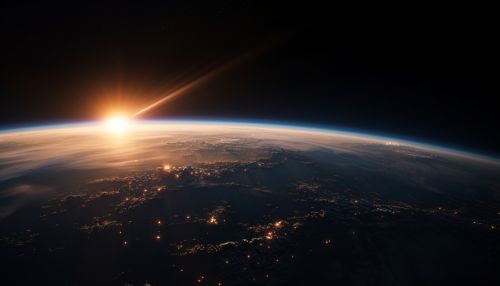Earth's orbit
Earth's Orbit: An Overview
Earth's orbit is the trajectory along which our planet travels around the Sun. This elliptical path, also known as an eccentric orbit, is determined by the gravitational forces between the Earth and the Sun. The Earth completes one full orbit around the Sun once every 365.25 days, a period known as a sidereal year.


Orbital Characteristics
The Earth's orbit is not a perfect circle, but an ellipse. The elliptical shape of the orbit is a result of the gravitational forces between the Earth and the Sun. The distance between the Earth and the Sun varies throughout the year, with the closest approach, or perihelion, occurring in early January, and the farthest point, or aphelion, occurring in early July.
The Earth's orbit also has an inclination of about 23.5 degrees relative to the ecliptic plane, the imaginary plane that contains the Earth's orbit around the Sun. This inclination, known as the axial tilt or obliquity, is responsible for the changing seasons on Earth.
Orbital Speed
The speed at which the Earth orbits the Sun varies throughout the year due to the elliptical shape of the orbit. The Earth moves faster when it is closer to the Sun (perihelion) and slower when it is farther away (aphelion). This variation in orbital speed is described by Kepler's second law of planetary motion, which states that a line joining a planet and the Sun sweeps out equal areas during equal intervals of time.
Orbital Resonance
The Earth's orbit is also influenced by the gravitational forces of other planets in the solar system, a phenomenon known as orbital resonance. For example, the gravitational pull of Jupiter and Venus can cause slight changes in the Earth's orbit over long periods of time.
Milankovitch Cycles
The Earth's orbit undergoes slow, cyclical changes over periods of tens to hundreds of thousands of years. These changes, known as Milankovitch cycles, include variations in the Earth's eccentricity, axial tilt, and precession. Milankovitch cycles are thought to be a key factor in the Earth's long-term climate change, including the occurrence of ice ages.
